Just after daylight breaks across the Key Largo sky, a van pulls up to a small restaurant and a crew begins the process of hauling out gear. It’s not a cleaning crew or even a new shipment for the kitchen. This team comes equipped with cameras, microphones, lights, monitors and miles of cable. This team represents an elite group of professionals from Citizen Pictures based in Denver, Colorado.
The set-up goes smoothly and the producers notice that, during the past few hours, their activity has drawn a crowd. This is nothing new when you are shooting a program for the Food Network. A flatbed arrives hauling the signature red Camaro and a cheer rises from the onlookers. Inside the little cafe, the sound man checks his watch. It’s not quite time for the show’s talent to arrive.
Frank Matson and Tim McOsker are the show’s Executive Producers. They are outside and getting a little concerned about the size of this crowd. They’ve never had to deal with a group this size and they begin discussing how they’re going to get opening shots. Since their early morning arrival, it would seem that the entire island has been alerted and has descended on them. They estimate a thousand people lining the streets and surrounding the restaurant.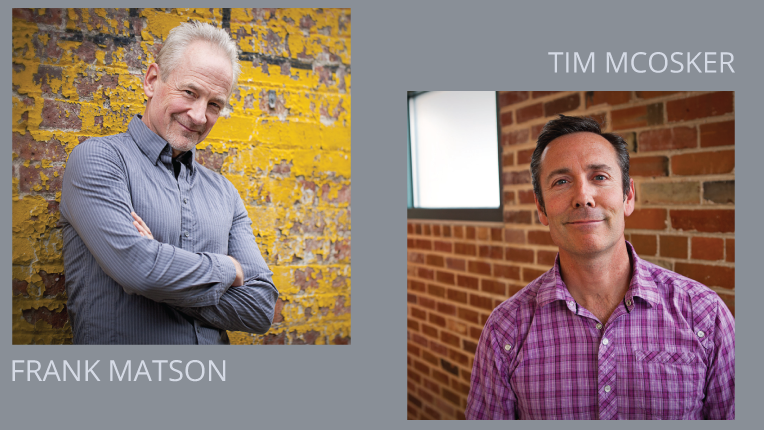
They are both caught off guard as a sudden roar goes up like a rock star has stepped on stage. They can just make out tattooed arms raised and the bleached tips of Guy Fieri’s spiked hair above the group closest to the car. Matson and McOsker smile as they watch Fieri give high fives to dozens of raised hands. They look and each other and now know how to open this edition of “Diners, Drive-ins and Dives”. They will just let “Guy be Guy.”
A Food Star is Born
Fieri has been a fixture on the Food Network since he won the “The Next Food Network Star” competition in 2006 and began hosting “Triple-D”, as he calls it, later that same year. He has gone on to host other shows on other networks but he always comes back to these roots.
Fieri says that he’s closest to this production crew: "The DDD crew members have paid their dues on this show and are very heavily invested in its success. For the most part, we’ve all been together for a long time now, and their collective field expertise really shows in the final product. We’re able to make on-the-fly creative decisions in the middle of production, when need be. It’s those little details and that pride of ownership that make the DDD crew stand out."
The program is more reality than a cooking show and features Fieri, in a different restaurant somewhere in the country, joking with local chefs and sampling their signature dishes. They have to date featured more that 800 kitchens in 47 states. They are working on their 24th season.
The Citizen Story
The show is currently produced by Citizen Picture and we caught up the production company’s President & CEO, Frank Matson and Vice President of Production and Development, Tim McOsker. Both have been Executive Producers of the show since Citizen took over production in 2011.
Matson founded the Denver based company 32 years ago after spending 5 years at KUSA as a director. He tells us that his company had to climb the ladder through bigger and bigger productions before landing a big one. “We have done all kinds of things. We did a series for Discovery Channel on Lance Armstrong when Lance won his 7th Tour de France. We did a weight loss series called ‘I lost it’. We were in that place for a long time of doing a special, several one-offs, a short series.”
This is when they caught the attention of Food Network executives who asked them to produce a show with Food Network star, Giada De Laurentiis called, “Giada at Home”. This show lasted for five years. They simultaneously worked with the network on "Extreme Cuisine with Jeff Corwin," where they got lots of road experience in a variety of surroundings. Because of these experiences, they were offered “Diners, Drive-ins and Dives.” McOsker tell us this was a daunting task, but Citizen was up to the challenge: “We know we inherited a great show. We knew Guy was good, but we saw a couple of things that we could do to make him better. We needed to slow it down a little bit, embrace the humor, embrace him more. We wanted to make it more of a showcase for the chefs to really become characters in their own right. We were like kids in a candy store trying to improve it.”
Matson adds, “That was a big thing for us, slowing down the pacing of the show. We felt like the food and the photography needed to ‘breathe’ more. We needed to essentially enhance Guy’s on-camera rapport and humor. That’s a big thing we’ve done in editing.”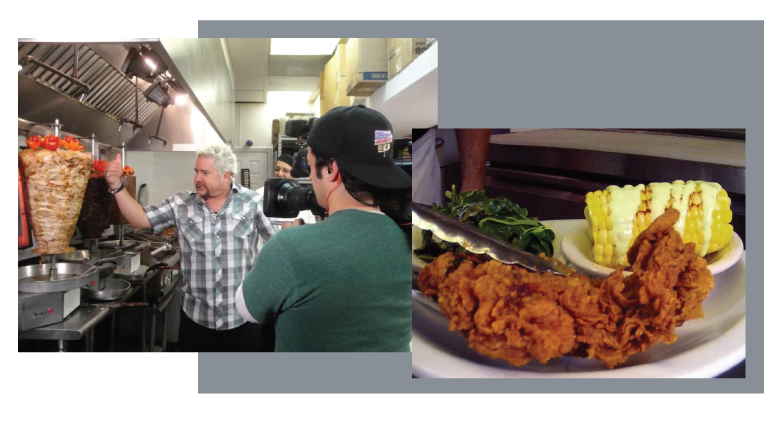
How do you allow the photography to “breathe” more? McOsker, who has been in food television since joining the crew of Food Network's "Unwrapped" in 2000, gives us an example. He says you can see it in the hero shot — the image of a finished plate of food. “The plate was already done. A burrito would be sitting there, and lit perfectly. We decided that the picture of the burrito wasn’t all that great looking by itself. But what about when they’re pouring on the hot tomato salsa or the cheese is sliding off the burrito? Or like when they stick a knife into the burger and the juices are coming out of it. We really started to embrace that part of the cooking.”
Communication is Key
Both men tell us that Fieri is very much involved in the process. He’s definitely a hands-on host. Matson says that this was another part of the challenge in taking on the show, "Guy is different than any other talent that we’ve worked with. He’s very involved in every little detail — details as far as the crew, the audio people, the grips, the production assistants, the producers, the photographers. He has a rapport with everybody on the crew. That was the other daunting thing when we took over the show — to quickly get up to speed with exactly what Guy wanted."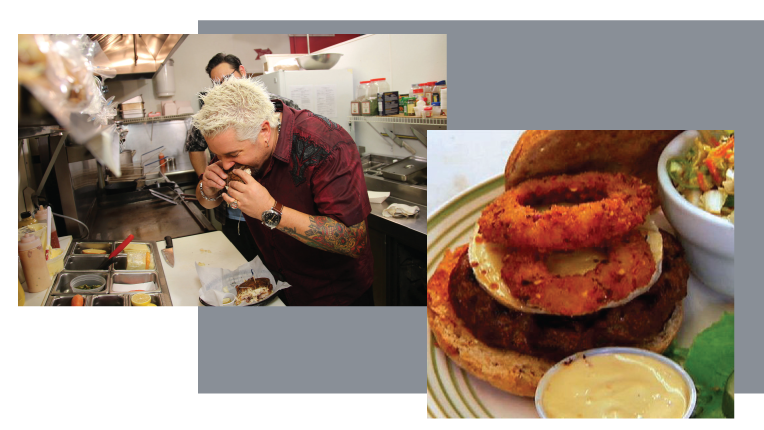
Fieri tells us that this close interaction is a big factor in the quality of the show, "We communicate nearly every day about everything from the research on locations to the production schedule and the recipes to be featured. Frank is on set for almost every location we film and you can’t get any closer to the action than that. He has a truly intimate look at the show from being on set. Brainstorming ideas, answering questions, handling recommendations, solving problems — they all take place instantly because he is on set versus phoning it in. There’s no substitute for showing up and you see it in the production value. As they say, the proof is in the pudding."
Never Stop Improving
Matson and McOsker tell us that they are always trying to improve what they’re doing. They recently switched to new, higher-end cameras. They began the show with Panasonic HDXs that shoot on DVC Pro. “Just in the last 6 months we switched all the cameras over.” Frank says. “We now shoot with with Sony FS7’s — for one, getting rid of video tape. Also, we like the look of it and as a path to 4K should the show ever go that route.”
They also use Canon 5Ds for the food shots because of their small size and shallow depth of field. The team also also packs a GoPro to get an unusual shot like going into a pizza oven connected to a paddle. They will occasionally use the small camera to be an additional wide shot. Matson also tells us that they recently added a Ronin, “It’s basically like a little steering wheel that has a gimbal to hold the 5D. You can literally run around and it’s a steady cam. You can start with the shot high, above your head and smoothly go all the way down to your feet. It gives you the ability to look like you have a crane that comes in and ramps.”
The lighting is minimal really. We try to make it look as natural to the restaurant as it can be.
In addition to shooting with the right camera, lighting is essential to getting great shots. How do you light in a commercial kitchen with shiny, stainless surfaces that is normally flooded with overhead fluorescent light? “The lighting is minimal really. We try to make it look as natural to the restaurant as it can be,” Matson surprisingly remarks, “The guys are using Diva lights and sometimes, they use some HMIs in the dining rooms where you get some daylight streaming in. We just want to punch that up a little bit. We definitely try to not over-light it so it looks like it’s natural interior.”
Getting the sound as clean as it can be is actually simpler than you might think. Frank tells us that the secret is to fully close down the restaurant. “When the show started in 2007 they were actually shooting in live kitchens. Over time, as the show grew in popularity, we started asking the restaurants to close for part of the time in order to shoot in more of a controlled environment.”
They capture sound using a boom mic and wireless lavaliers normally taped under the clothing of both Fieri and the featured chef. Matson gives us more details, “We have two amazing audio engineers who are super careful about getting clean audio in the field. Then we have the leisure of sweetening it later at Citizen in Pro Tools. We don’t add any sound effects or fake sizzle. Everything that you’re hearing was picked up at that location.”
Finding Great Food
How do they find the restaurants that are featured? Matson tells us that they take suggestions from the public, but there’s a very serious selection process because of the show and the network’s reputation, “It’s very important that the place be legit. We don't want to send anybody to a place that isn't legitimately a great restaurant.”
McOsker interjects, “Whatever place is on Triple-D you can go to it because it is a winner!”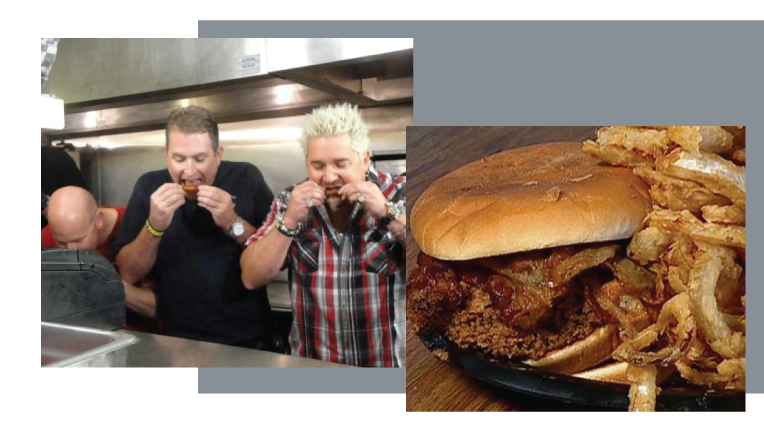
Matson continues by giving us the details of the selection process. He says good research is the key, “Now that we’ve shot in 47 states, we know a lot of chefs who will give us recommendations from an area. We usually aren’t going to go to a place that’s been on television before. We want to make sure that a high portion of what they’re serving is made from scratch.”
Because they’re looking to make a good program, they also want a restaurant with a great story. After the four to six weeks of research, Matson concludes, “Usually our crew comes out and has the time to shoot at a restaurant before Guy gets there. So if there’s any issues we can vet them out before he actually arrives.”
Part of the show is Fieri sampling the food and giving his opinion, but does he really enjoy all the food that he tastes? Matson tell us that that, too, is part of the research process, “It’s not like we randomly stop by a restaurant and don’t know about it. We can tell by our research if it’s likely to be good. And Guy, if he doesn't like it, he’s not going to eat it and pretend that he does. He’s just not that way. Honestly, more often than not, he’s still eating it after the cameras turn off.”
McOsker adds, “And he’s very kind. He’ll bring some out to the crew and insist that you have to try this.”
A Well Oiled Machine
After five years of production, Citizen has the process down. Matson is proud of his team and explains how they constantly travel to new cities after they find the best eateries, “Once the train is rolling and we come to town, it is a machine. Typically, a crew comes out for eight days and we do somewhere between 13 -18 cities per year. So that’s about 140 days of production on the road for the guys on the crew per year.”
Citizen will run two full crews in a city. The first crew comes in bright and early and begins set up on the first restaurant. Guy Fieri will come in after a few hours and begin his stand ups and interviews. The second crew heads over to a separate location. When Fieri wraps at location one, he heads to location two and the first crew heads for yet a third location. Playing a kind of diner leap frog makes for a full day of shooting. Guy will typically stay in town for about 2-3 days so the team can pick up any additional footage that he needs to be seen in.
McOsker explains the post-production flow: “The video first goes through a writer, the writers these days are both writers and assistant editors. They are working with the raw footage. It then goes through an editor using Adobe Premier and it usually takes a week plus to edit a single story”.
Although some shows are based in a single city, most of the episode rely on the producers and writers to find a common thread. For example, a show might be built around a type of food like barbecue. McOsker says, "What we’ll do is go out and and shoot in DC, shoot in Miami or shoot in Nashville. Then you’ll be taking a story from each to create a show. It’s definitely a huge jigsaw puzzle post side. Making sure that these shows have a different flavor from different parts of the country."
The Final Product
They’ve found great food, shot great video and created a good story, but that is still not the end of the process. Matson tells us that the final step includes Fieri from home. “He has a mini sound studio in his home. So the final step from him is to get a voice over. We try and do most of it on camera, but he fills in any holes with any voice over or intros that we need.”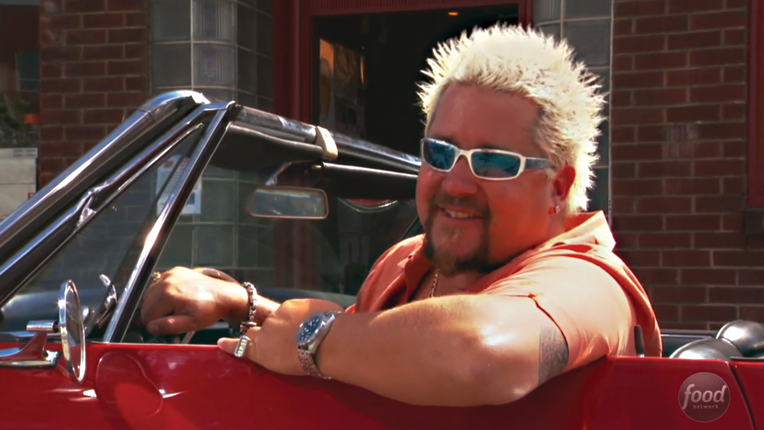
Finally to get the best look, Matson has to look no further than down the hall, “We have a phenomenal colorist who’s been doing it since we took over the show. And that’s a big edge as to why the show looks consistent and looks so good. It doesn't just come from the field and go into post and go on the air. We actually color correct all of it. He looks at every single frame.”
How does it look? You can be the judge by catching the final product on the Food Network. You can find the complete schedule at www.foodnetwork.com and keep up with the latest work from Citizen Pictures at www.citizenpictures.com
Jeff Chaves was trained in video production in the Army and has been involved in the industry for more than 27 years. He and his wife run Grace Pictures Inc.








